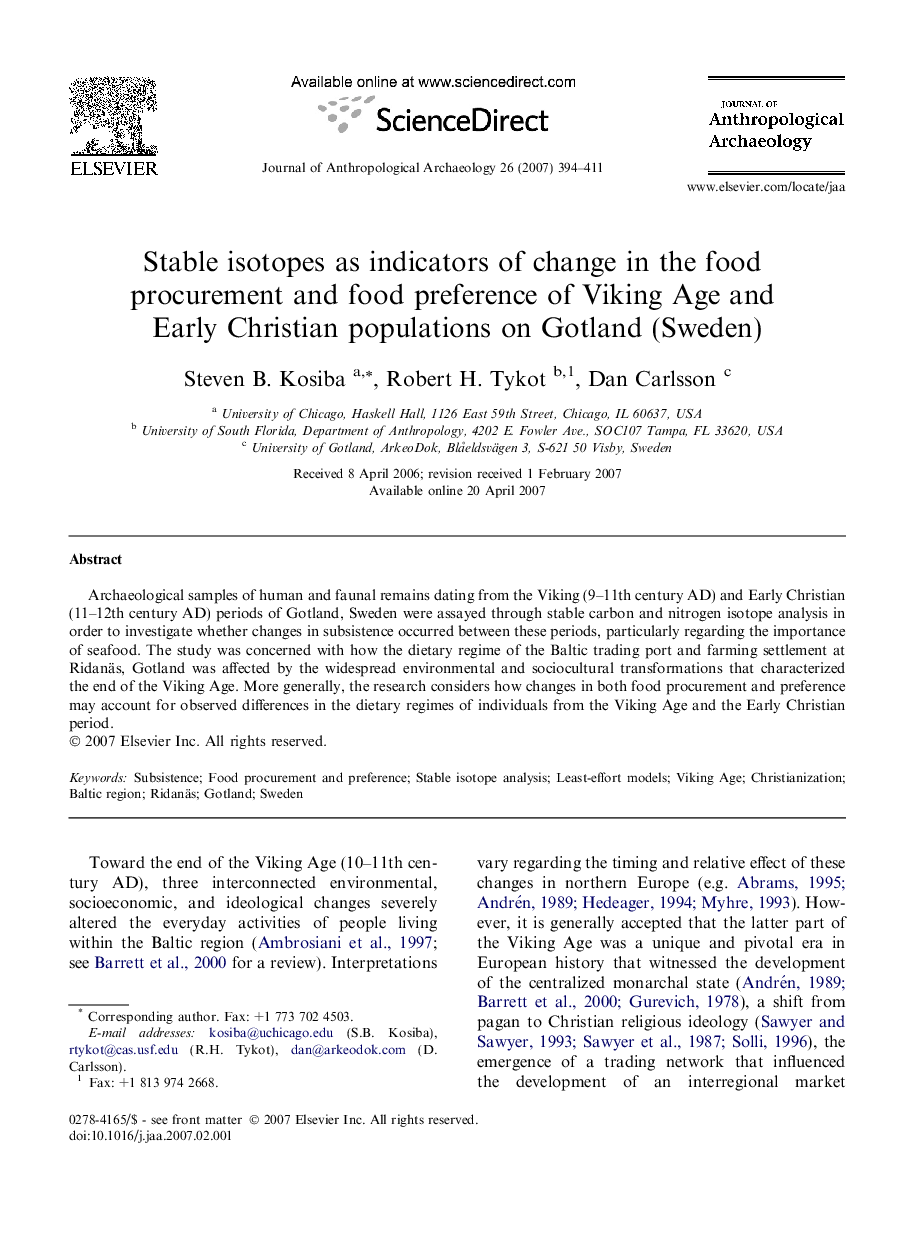| Article ID | Journal | Published Year | Pages | File Type |
|---|---|---|---|---|
| 1035247 | Journal of Anthropological Archaeology | 2007 | 18 Pages |
Archaeological samples of human and faunal remains dating from the Viking (9–11th century AD) and Early Christian (11–12th century AD) periods of Gotland, Sweden were assayed through stable carbon and nitrogen isotope analysis in order to investigate whether changes in subsistence occurred between these periods, particularly regarding the importance of seafood. The study was concerned with how the dietary regime of the Baltic trading port and farming settlement at Ridanäs, Gotland was affected by the widespread environmental and sociocultural transformations that characterized the end of the Viking Age. More generally, the research considers how changes in both food procurement and preference may account for observed differences in the dietary regimes of individuals from the Viking Age and the Early Christian period.
